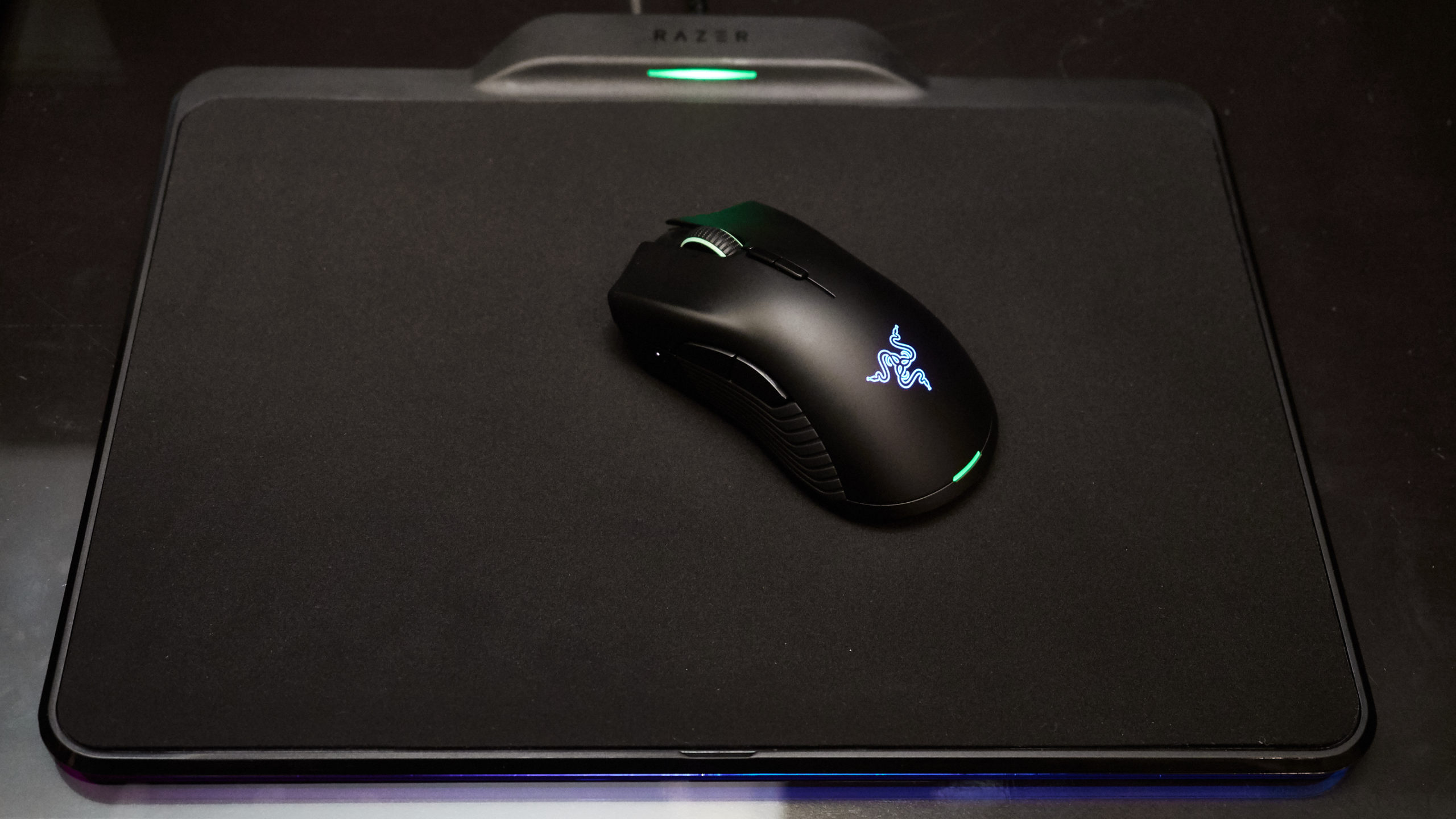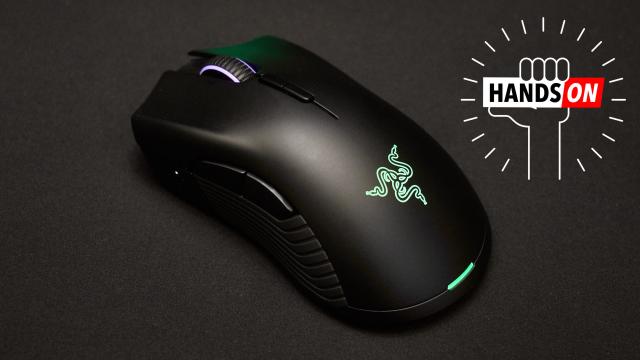It doesn’t look special. At a glance, it’s just a Razer gaming mouse sitting on a Razer gaming pad – which means everything is black except for some bright, colourful lights. But then you pick the mouse up and it’s way too light to be wireless. After ten seconds the cursor on screen flickers and the lights on the mouse turn off. It’s disconnected because this mouse, the Razer Mamba Hyperflux, powers itself entirely from the mousepad. There’s no battery in the thing at all.
The Mamba Hyperflux is looks just like a new variation of Razer’s popular wireless Mamba mouse, and the name doesn’t help matters, but while the form might be similar, everything else is different. First there’s the wireless power. The Mamba Hyperflux requires Razer Firefly Hyperflux mouse pad in order to function. The Firefly Hyperflux has a magnetic coil built in that powers the mouse no matter where it is on the pad.
The pad’s surface is replaceable, so you can switch between a hard surface similar to the original Firefly, or a soft surface, similar to the mousepads most of us are accustomed too.

But let’s go back to the mouse. Because this thing is a little bonkers. It doesn’t have a battery and consequently weighs just .21 pounds. The original Mamba weighs .27 pounds. Which is an awfully big difference in a device that fits in the palm of your hands. The weight makes the Mamba Hyperflux feel almost insubstantial. I’m used to a little heft in my mouse, and at first this thing was skating around beneath my hand. I felt like a reckless teen driving something other than a station wagon for the first time. Gamers who are particular about the weight of their mouse might be disappointed.
Other might be excited because besides axing the battery, the Mamba Hyperflux has also axed the laser sensor and moved over to a 16,000 DPI optical sensor. Like many gamers, I prefer an optical sensor. Laser sensors are way more accurate, but that means that tiny imperfections in the mouse pad surface can lead to an annoying jittery affect. The Mamba Hyperflux’s move to an optical sensor is definitely a good one.
But the price might be a little steep for a mouse that’s all cool tech and not a lot of customizability (apart from Razer Chroma lights). The Mamba Hyperflux and Firefly Hyperflux will be sold together for $US250. They’re expected to hit stores by the end of Q1 2018.
[Razer]
We were in Las Vegas at CES 2018! Click here to read our complete coverage.
